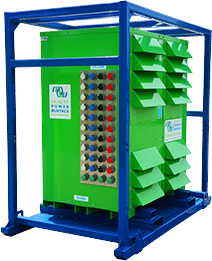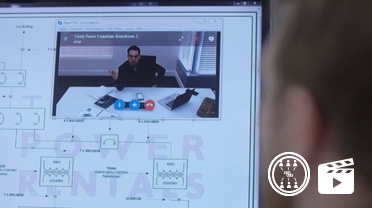- OUR APPROACH
-
COMMITTED TO YOUR SUCCESS
Our approach, developed over decades of experience, is fine-tuned to get the results you want.
We deliver concept-to-completion solutions, designed by temporary power specialists with access to the largest inventory of high-quality power generation and distribution equipment in North America.
-
- Equipment
-
RENTALS
From a wide range of diesel and natural gas generators to transformers, cable, light towers and more, our large rental fleet and extensive vendor network ensure we’ll have the temporary power equipment that your project requires — every time.

-
- Industries
-
INDUSTRIES WE SERVE
For nearly 20 years, we have been at work powering projects across Canada’s industrial sectors.
Select from this sampling of industries to learn how we can put our expertise to work for you.
VIEW ALL- Projects
- About
-
A PROUD HISTORY. A BRIGHT FUTURE.
From our inception in 1998, we have been building our team on a foundation of excellence. Our team members’ passion, expertise and commitment are what have allowed us to grow into a national company with projects across Canada.
Click on the links to learn more about our history, our team or our career opportunities.
- Blog
- Contact
-
Power grid interruptions, blackouts, and severe weather, such as hurricanes, ice storms or strong winds, have all prompted business owners and plant managers to seek out insurance against financial and time losses, as well as equipment damage, through installing backup power generation equipment. However, simply procuring a backup generator does not exhaust the defensive strategy against such threats. In fact, testing and maintaining the backup power system is equally vital in protecting a plant’s operations and equipment in the case of a power outage. A number of managers still remain unaware of the weaknesses of their backup solutions due to insufficient testing.
Insufficient Testing
A widespread misconception regarding a backup power system’s testing and maintenance routine is that a regular, component-by-component test will provide enough grounds for trusting in the system’s ability to handle unplanned downtime. Even more popular is the belief that testing the system’s prime mover, the engine, produces sufficient evidence that the system is working properly. Nevertheless, many plant managers find themselves at a loss when an actual power interruption causes a backup power equipment malfunction and wonder what went wrong. Since the backup system is actually composed of a number of discrete systems and subsystems, such as switchgear, alternators, ventilation, cabling, cooling systems, fuel systems, etc., often these come from a number of different manufacturers and are designed to work with various sizes, models or makes of generators. Simply testing the engine or the individual parts of the backup system cannot account for the same stresses being applied to the system as a whole and are no guarantee that it will work together harmoniously in emergency situations.
Resistive Load Bank Testing
In looking to save on time, involvement and money, typically plant managers and business owners focus on using a resistive load bank to produce an electrical load, which is applied to the backup generator in order to diagnose potential problems with it. However, resistive testing cannot account for the entire plant’s emergency preparedness, as usually a facility’s power consumption is significantly higher than the resistive load used for the test. This type of testing will provide assurance that the generator’s engine is working properly, but will not identify possible problems with the entire backup power system.
Resistive/Reactive Load Bank Testing
Using a resistive/reactive combination load bank is the only way to simulate the backup power system’s actual performance in a changing load pattern, characteristic for a real-world power disruption. A resistive-only test does not challenge the system’s voltage regulator sufficiently and it cannot be certain how the backup system will handle drops in voltage in its regulator and how quickly the system will recover from a large step load. Only after the plant manager has observed and rated the ability of the entire system, including all components and subsystems, to generate power for a sustained period of time and under the typical stresses induced by the facility, can he or she rest assured that the plant is well protected against a prolonged interruption in utility power.
Reducing Wet Stacking Issues
An alternative benefit of load bank testing is the prevention or reduction of wet stacking, a serious problem resulting from a diesel engine operating at no or insufficient loads for a prolonged period. In response, the engine cannot generate high enough temperatures to completely burn the fuel and allows it to accumulate in its exhaust system, leading to decreased engine performance over time. In this case, using a load bank to apply supplemental load to burn off the excess fuel for a few hours may remedy the situation.
Conclusion
Proper system-wide resistive/reactive testing of a plant or a facility’s backup power generation system is the only way to identify its weaknesses in the case of unplanned power disruptions. In addition, load bank testing with equipment capable of increasing the test load to prescribed levels is an effective way of preventing wet stacking. Establishing a long-term relationship with a service provider that has the necessary experience in providing up-to-date resistive/reactive load banks, as well as knowledgeable assistance in running the necessary tests, is an essential part of a plant’s emergency preparedness plan.
Additional Resources:
Application of Resistive/Reactive Load Banks for Diesel Generator Set Testing – an in-depth overview of the underlying principles of resistive/reactive combination load bank testing, including its application to parallel systems.
A Close Look at Wet Stacking – a detailed discussion of the reasons behind wet stacking, their implications and possible solutions for both existing and new facilities.
Inspection and Testing of Emergency Generators – NFPA Standard for the testing and maintenance of emergency backup systems, including certification requirements, generator classifications and maintenance and testing recommendations.
Emergency Generator Weekly Inspection Checklist – NFPA recommended (Word doc).
Emergency Generator Monthly Test Log – NFPA-recommended (Word doc).
Related Articles
Subscribe for access to exclusive content
















